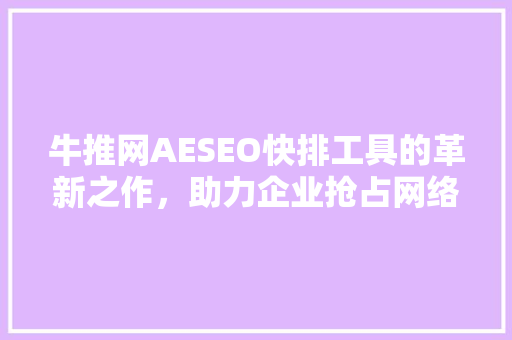Introduction:
In the ever-evolving digital landscape, search engine optimization (SEO) has become a crucial component for online success. One of the most essential aspects of SEO is keyword optimization, which involves identifying and strategically placing relevant keywords throughout your content. This article will delve into the world of Google keyword optimization, providing you with a comprehensive guide to improve your website's search engine rankings and attract more organic traffic.

1. Understanding the Importance of Google Keyword Optimization:
Before we dive into the intricacies of keyword optimization, it is essential to understand its significance. Google, being the most widely used search engine, utilizes complex algorithms to determine the relevance and ranking of websites. By optimizing your content with relevant keywords, you can increase your chances of appearing higher in search engine results pages (SERPs), thereby attracting more targeted traffic.
2. Conducting Keyword Research:
The first step in Google keyword optimization is conducting thorough keyword research. This involves identifying the words and phrases that potential customers are searching for related to your business or industry. To effectively perform keyword research, you can utilize various tools such as Google Keyword Planner, SEMrush, or Ahrefs. These tools provide valuable insights into search volume, competition, and keyword variations.
When selecting keywords, consider the following factors:
- Relevance: Choose keywords that are highly relevant to your content and target audience.
- Search Volume: Opt for keywords with a moderate to high search volume, as they indicate a larger audience interest.
- Competition: Avoid highly competitive keywords unless you have a strong online presence. Instead, focus on long-tail keywords with lower competition but higher conversion rates.
3. Incorporating Keywords Strategically:
Once you have identified your target keywords, the next step is to incorporate them strategically throughout your content. Here are some best practices for keyword placement:
a. Title Tag: Include your primary keyword in the title tag, ensuring it is concise and compelling.
b. Meta Description: Optimize the meta description with relevant keywords to entice users to click on your website.
c. Headings: Use headings (H1, H2, H3) to structure your content and include keywords in subheadings.
d. Body Content: Distribute keywords naturally within the body of your content, focusing on readability and value.
e. Alt Text: Include keywords in the alt text of images to improve accessibility and search engine visibility.
4. LSI Keywords:
Latent Semantic Indexing (LSI) keywords are terms that are semantically related to your primary keywords. Including LSI keywords in your content can enhance its relevance and improve search engine rankings. Tools like LSIGraph can help identify LSI keywords for your chosen primary keywords.
5. Monitoring and Refining Your Keyword Strategy:
Keyword optimization is an ongoing process. Regularly monitor the performance of your keywords using tools like Google Analytics and Google Search Console. Analyze metrics such as search rankings, click-through rates (CTR), and conversion rates to identify areas for improvement. Refine your keyword strategy by incorporating new keywords and removing underperforming ones.
6. Utilizing Google's Keyword Trends:
Google's Keyword Trends is a valuable tool that allows you to track the popularity of specific keywords over time. This feature can help you identify seasonal trends and anticipate shifts in search behavior. By staying updated with keyword trends, you can optimize your content accordingly and capture a larger audience.
Conclusion:
Google keyword optimization is a critical aspect of effective SEO. By conducting thorough keyword research, strategically incorporating keywords, and continuously refining your keyword strategy, you can improve your website's search engine rankings and attract more targeted traffic. Remember to focus on delivering valuable content and maintaining a user-friendly experience, as these factors ultimately contribute to long-term online success.







